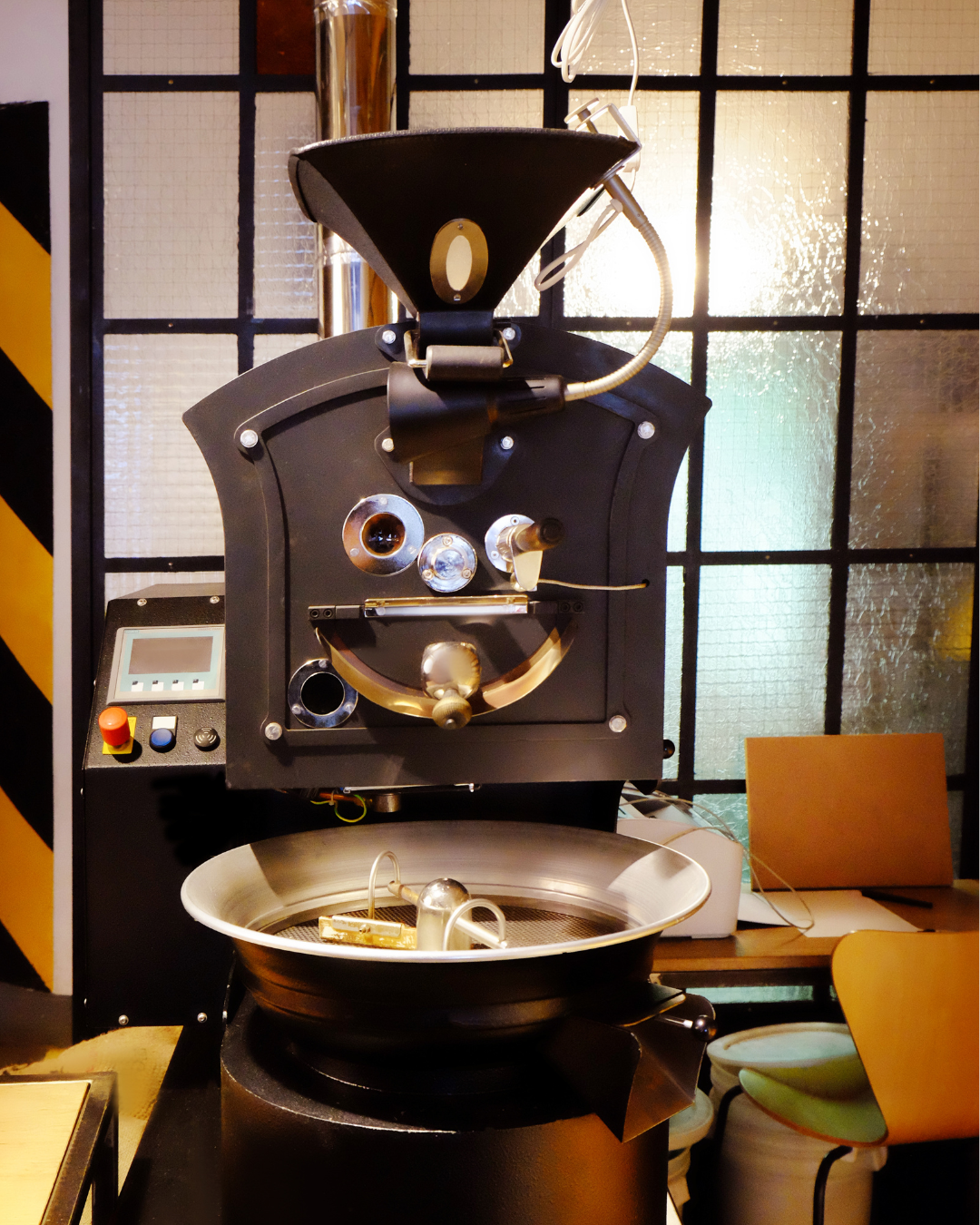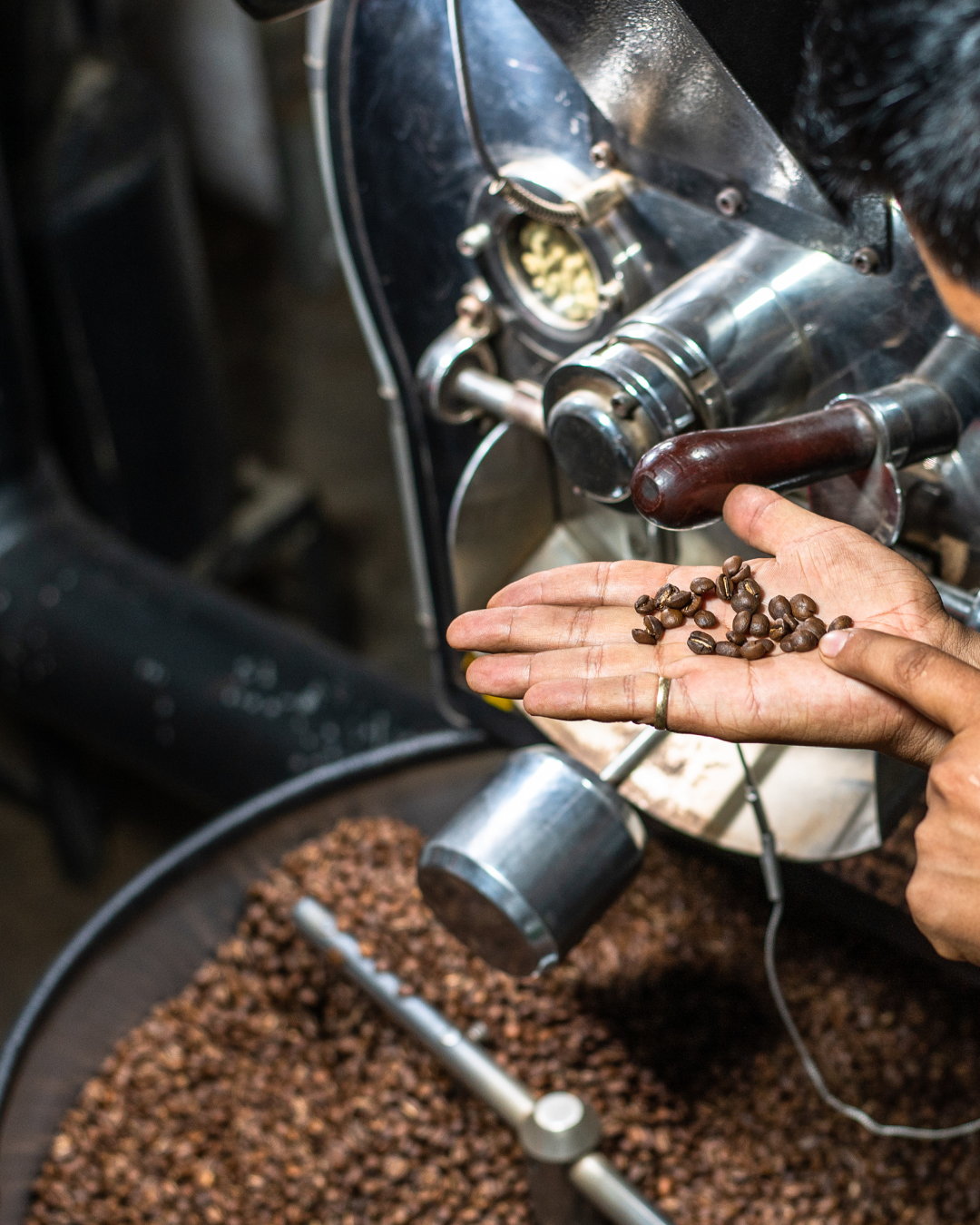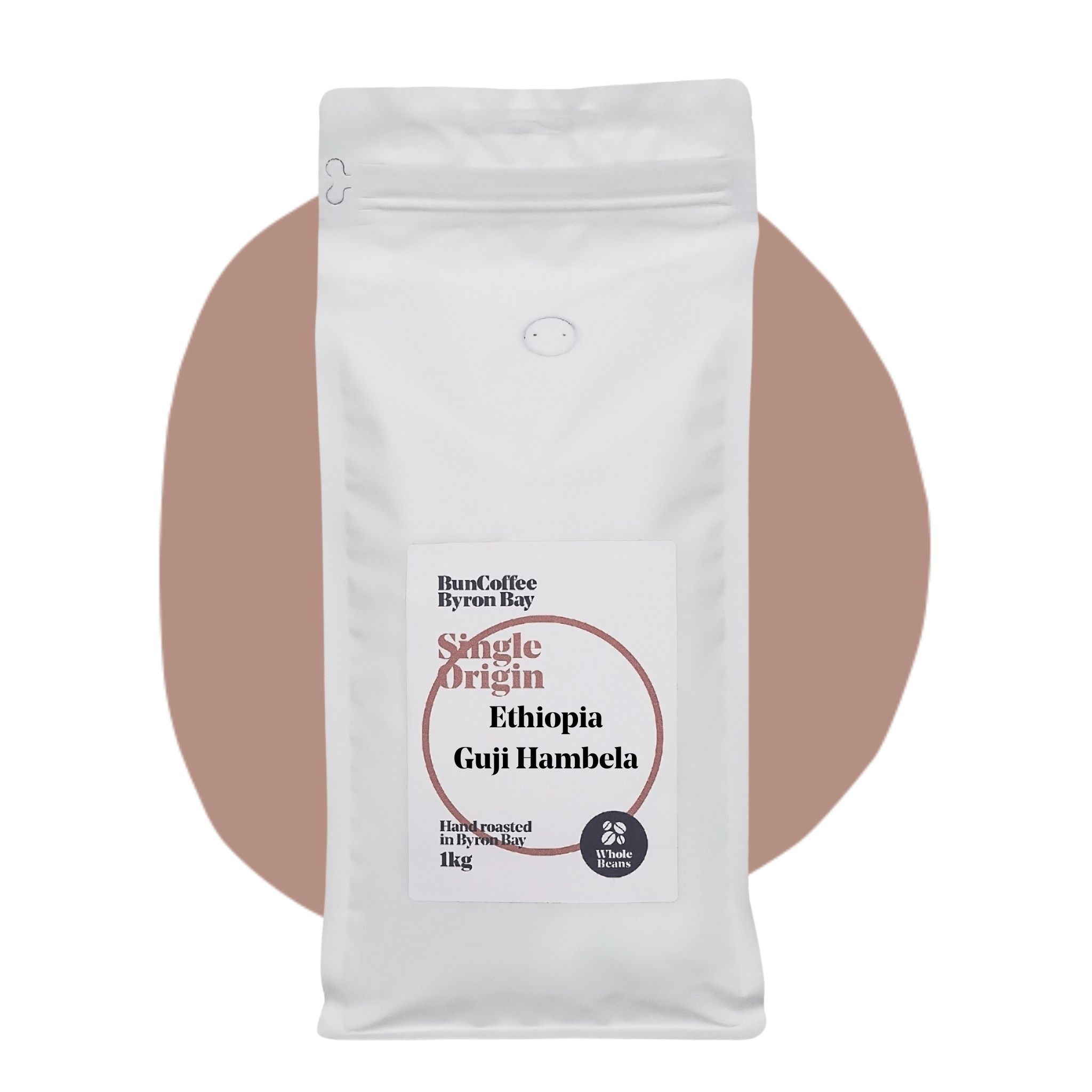This Ethiopian Coffee is produced on a 200-hectare farm in the Oromia Guji region. Grown at altitudes of 2,000m –2,100 m, this coffee offers a unique cup. The anaerobic (oxygen-free) processing method was introduced to the area in 2020. The process is to ‘ferment’ the coffee in a fully sealed and oxygen-deprived fermentation tank. First, the cherries are collected and separated from under-ripe, over-ripe, and green cherries.
Then, only the best, fully ripe cherries are selected and added to a special stainless-steel tank, where they are filled until tightly packed and sealed. The tank features an air exhaust valve and a temperature measurement system, allowing gases to escape. When the fermentation process begins, carbon dioxide (CO2) builds up, and the tank is filled with gas. The pressure pushes the water in the valve and CO2 out from the tank but restricts oxygen from re-entering. The time the cherry spends in ‘fermentation’ is determined based on the temperature gauge reading. Higher temperatures mean the ‘fermentation’ time will be short, while cooler
temperatures lead to more extended periods in the tank. For this coffee, the temperature must sit below 25 degrees Celsius throughout the entire fermentation process. Typically, the cherries are fermented for 4-5 days, as the pressure inside the tank forces the flavours of the juicy mucilage into the coffee beans. When the process is complete, the bright red cherry colour has charged to yellow tones. Once carefully removed from the tank, the coffee is dried slowly for 15-18 days on African drying beds in the full sun. The farmers play a vital role in producing such a unique coffee and the mill recognises their importance and offers social initiatives to support them better as well as providing school program initiatives to farmers' families, offering greater access to knowledge and information for a brighter future.

























